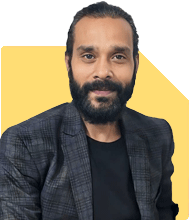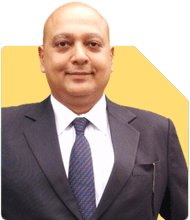Student Visa Waitlist for Germany - Will My Son Make It?
Dr Pananjay K Tiwari | Answer |Ask -Follow
Study Abroad Expert - Answered on Aug 31, 2024
They also guide PhD students who are studying internationally with their research.
Dr Pananjay has 21 years of academic and research experience and has published several books and research papers in various Indian and international journals.
He is a gold medallist with a master’s degree in science and a PhD in environmental sciences from the Hemvati Nandan Bahuguna Garhwal Central University, Uttarakhand.... more

My son has got admission in University of Stuttgart, Germany for his masters degree in Computers. We have applied for submission of documents for Visa processing on 31st July, 2024, but still it is showing wait-listed. How long it takes for the date to come up. I have heard that Schengen Visa for Germany there is not much load like US or UK. My son is very tense, as he needs to join the University before 1st Oct, 2024. I have paid the 1st semester fees & also opened the required the blocked account for his overseas expenses. Hence as an expert, can you please guide what is the waiting time to get Visa & is it possible to contact German Consulate in Mumbai for help in the matter.
You may like to see similar questions and answers below
Sushil Sukhwani | Answer |Ask -Follow
Study Abroad Expert - Answered on Apr 18, 2023
Dr Pananjay K Tiwari | Answer |Ask -Follow
Study Abroad Expert - Answered on Jan 07, 2025
Dr Karan Gupta | Answer |Ask -Follow
International Education Counsellor - Answered on Jul 28, 2025
Dr Karan Gupta | Answer |Ask -Follow
International Education Counsellor - Answered on Jul 11, 2025
Mayank Chandel |2575 Answers |Ask -Follow
IIT-JEE, NEET-UG, SAT, CLAT, CA, CS Exam Expert - Answered on Dec 13, 2025
Radheshyam Zanwar |6742 Answers |Ask -Follow
MHT-CET, IIT-JEE, NEET-UG Expert - Answered on Dec 13, 2025
Mayank Chandel |2575 Answers |Ask -Follow
IIT-JEE, NEET-UG, SAT, CLAT, CA, CS Exam Expert - Answered on Dec 13, 2025
Mayank Chandel |2575 Answers |Ask -Follow
IIT-JEE, NEET-UG, SAT, CLAT, CA, CS Exam Expert - Answered on Dec 13, 2025
Kanchan Rai |646 Answers |Ask -Follow
Relationships Expert, Mind Coach - Answered on Dec 12, 2025
Ravi Mittal |677 Answers |Ask -Follow
Dating, Relationships Expert - Answered on Dec 12, 2025
Ramalingam Kalirajan |10881 Answers |Ask -Follow
Mutual Funds, Financial Planning Expert - Answered on Dec 12, 2025
Ramalingam Kalirajan |10881 Answers |Ask -Follow
Mutual Funds, Financial Planning Expert - Answered on Dec 12, 2025
Reetika Sharma |423 Answers |Ask -Follow
Financial Planner, MF and Insurance Expert - Answered on Dec 12, 2025
Reetika Sharma |423 Answers |Ask -Follow
Financial Planner, MF and Insurance Expert - Answered on Dec 12, 2025


























